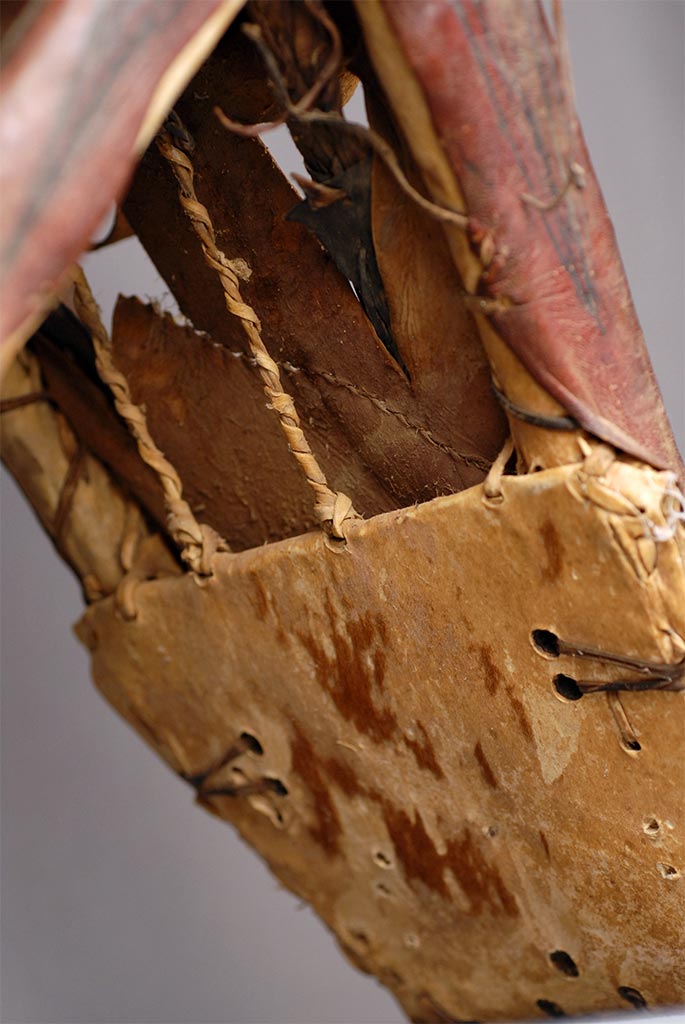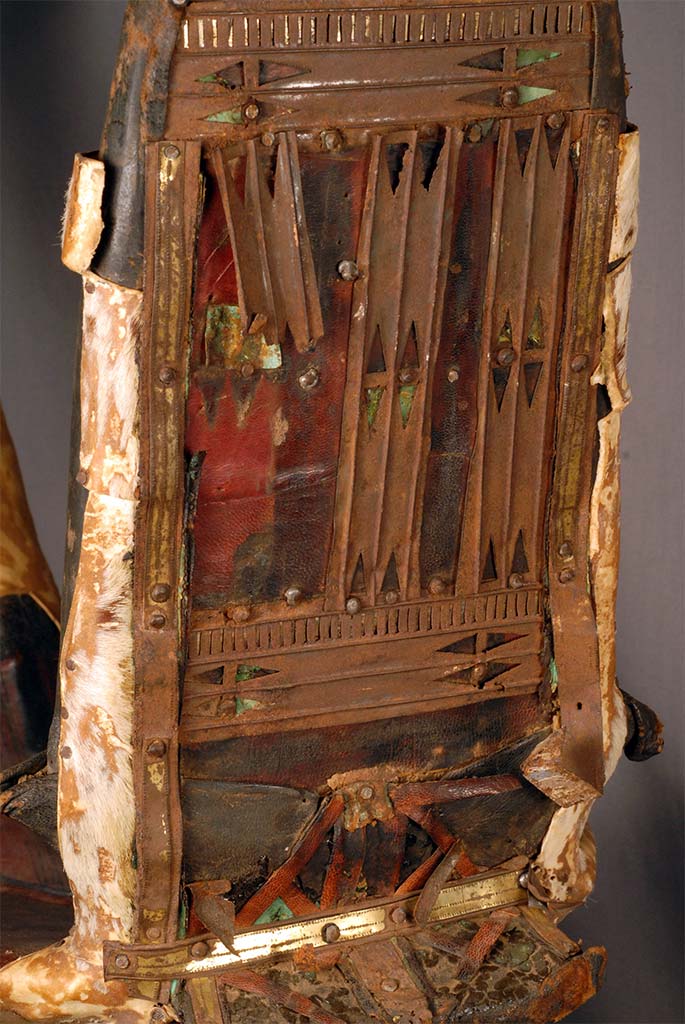
Featured Object: Camel Saddle
- Post Date: 6/30/2016
- Author: Billy Ridgeway
- Reading Time: 4 minute read
This camel saddle originates from the Tuareg, a nomadic people that current inhabit areas of Mali, Niger, Burkina Faso, Algeria, and Libya. The Tuareg have been traversing the Sahara with caravans of camels for hundreds of years, using them as pack animals to trade various goods on either side of the desert, enduring extreme temperatures and conditions such as drought and sand storms. The staple of Tuareg trade is salt, which is harvested from areas such as the Bilma oasis, molded into pillars, and strapped to camels for transport. The Tuareg have traveled with groups of camels 20,000 strong in order to ensure protection, though these staggering displays have been replaced with groups that consist solely of family units due to declining population, need for trans-Saharan land trade, and increased rates of sedentary lifestyles.
Camels are typically packed with bales of fodder for the trip across the desert, and as the trip wears on its pace quickens. Sand dunes, which run roughly along the trade routes of the Tuareg in the Ténéré region of the Sahara, are used for protection from the deserts winds, as well as for guidance. Marches last from dawn till dusk, and caravans can cover up to 50 kilometers a day.
Tuareg Culture
The Tuareg are a diverse group of tribes linked by their language—Tamasheq—their history, and, as of the 16th century, Islam. Their culture is highly stratified along occupational lines; farmers that were traditionally viewed as subordinate to traders have slowly gained prominence as trading has declined in both economic and social importance. Tea drinking is highly regarded by the Tuareg, and cups are usually drunk in groups of 3, sweetened and flavored with mint. They are also known for their indigo gowns and turbans that lend their striking appearance to the common moniker “blue men of the desert.”
The history of the Tuareg is steeped in conflict, for the most part a result of French colonization in West Africa. The group had been rather powerful before the French arrived but suffered defeats in the late 19th and early 20th century that significantly diminished their role in West Africa. When West African countries gained independence in the mid-20th century, the Tuareg, being spread out over the established political borders, became minorities in every country they inhabited and felt excluded from post-colonial governments that were formed. Tensions came to a head in 1961, with violence between the Taureg and the Mali government lasting for 3 years, at which time many Tuareg fled the country after the Tuareg groups that had been fighting were defeated. This violence, as well as recent droughts, has led to declines in population, and the Tuareg currently number somewhere between 1 and 1.5 million.
Despite more recent spouts of violence and claims of discrimination, the Tuareg remain entrenched in their desert habitat. Their culture still depends upon camel trade, and the saddle is an integral part in maintaining this tradition. This unique group of people has used hardy saddles like the one in the Spurlock’s collection for hundreds of years, leaving an enduring legacy of strife and perseverance, both through violence and the harshness of West African deserts.
-
- Share:
- Subscribe to Newletter
- Giving

